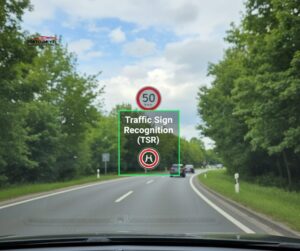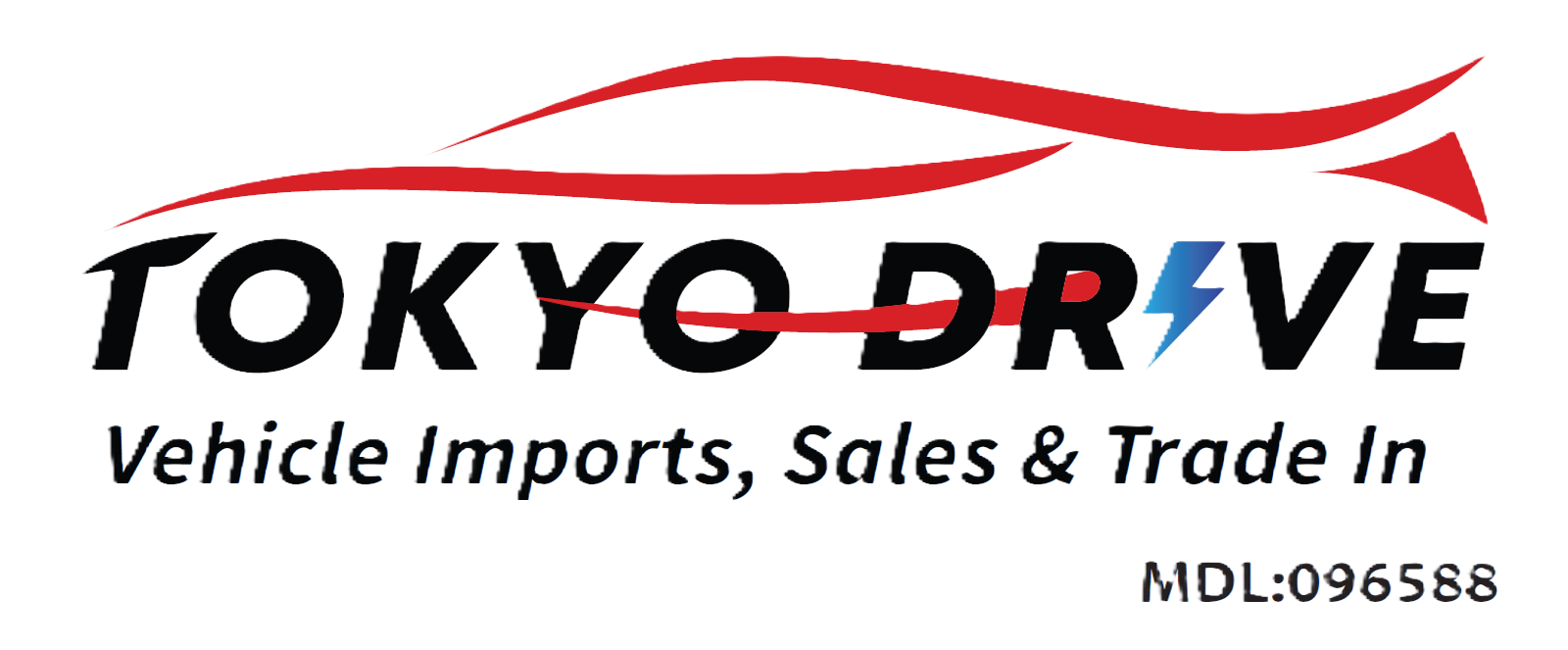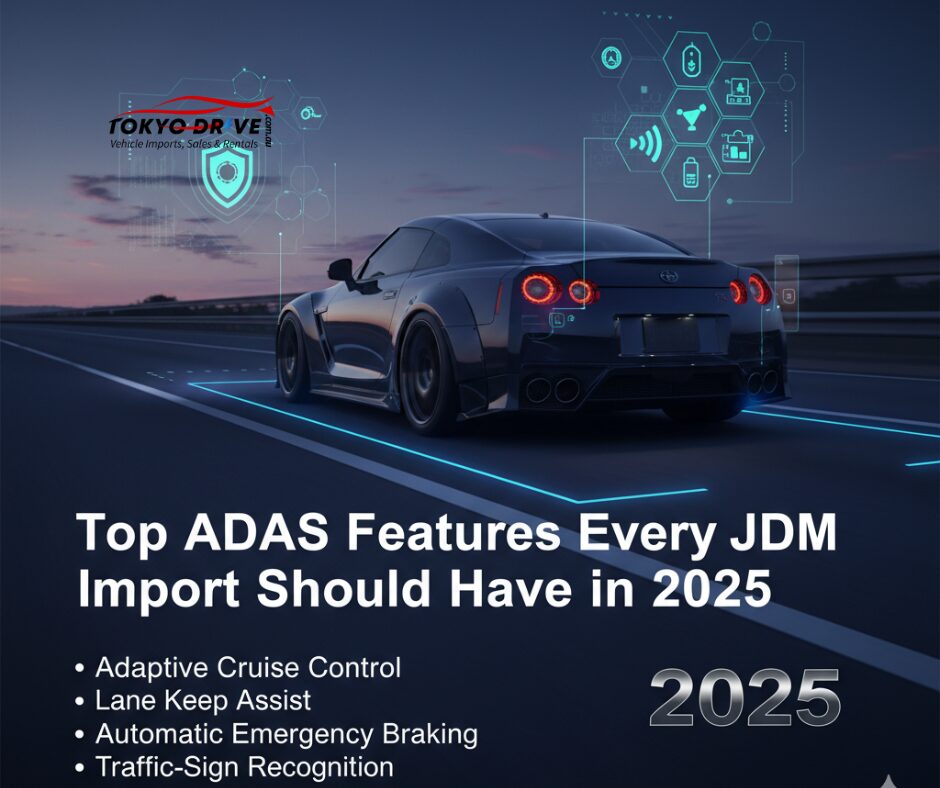In 2025, the automotive industry continues to redefine safety, convenience, and driving experience through Advanced Driver Assistance Systems (ADAS). These intelligent technologies are now an essential consideration for JDM (Japanese Domestic Market) car enthusiasts who import vehicles to Australia. Whether you’re eyeing a Nissan Skyline, a Toyota Supra, or a Subaru WRX, understanding which ADAS features to prioritize can make all the difference between a good import and a great one.
Let’s explore the top ADAS features every JDM import should have in 2025—for safer, smarter, and more future-ready driving on Australian roads.
1. Adaptive Cruise Control (ACC) – Smarter Highway Driving
Adaptive Cruise Control has evolved from a convenience feature into a near-essential safety component. Unlike traditional cruise control, ACC automatically adjusts your vehicle’s speed to maintain a safe following distance from the car ahead.
Most modern JDM models—like the Toyota Crown, Honda Accord Hybrid, and Subaru Legacy B4—include ACC that uses radar and camera sensors to detect traffic flow. This system is particularly valuable for Australian highways, where speed variations and long-distance travel are common.
Why It Matters:
-
Reduces driver fatigue on long journeys.
-
Prevents rear-end collisions in stop-and-go traffic.
-
Improves fuel efficiency with smoother speed control.
2. Lane Keeping Assist (LKA) – Stay in Your Lane, Safely
Another critical ADAS feature to look for in your next JDM import is Lane Keeping Assist. This technology uses cameras to monitor lane markings and automatically corrects your steering if you begin to drift unintentionally.
For instance, the Mazda Atenza (Mazda6) and Honda Fit e:HEV offer advanced lane-keeping systems that work seamlessly even on narrow or curved Australian roads. Some high-end JDM models also provide Lane Departure Warning (LDW)—which alerts the driver before the car actually drifts.
Why It Matters:
-
Reduces risks of side collisions and off-road accidents.
-
Enhances driver confidence during long or night drives.
-
Complements ACC for semi-autonomous cruising.

3. Blind Spot Monitoring (BSM) – Detect the Unseen
Every driver knows the anxiety of checking blind spots before changing lanes. With Blind Spot Monitoring, radar sensors on the sides of the vehicle detect approaching cars from behind or beside you—signaling through lights or audio warnings.
In models like the Nissan X-Trail and Toyota Harrier, the BSM system integrates with Rear Cross-Traffic Alert (RCTA), which warns of oncoming vehicles when reversing—perfect for tight Australian parking lots.
Why It Matters:
-
Prevents accidents during lane changes and merging.
-
Enhances situational awareness.
-
Offers extra safety when driving in urban areas.
4. Forward Collision Warning & Automatic Emergency Braking (AEB)
These two features are the cornerstones of modern vehicle safety. Forward Collision Warning (FCW) alerts the driver when a collision risk is detected, while Automatic Emergency Braking (AEB) applies the brakes automatically to avoid or mitigate the impact.
Many JDM imports—like the Subaru Forester EyeSight Edition and Toyota Corolla Axio—come equipped with advanced stereo cameras that can detect pedestrians, cyclists, and vehicles with remarkable accuracy.
Why It Matters:
-
Reduces rear-end and pedestrian accidents.
-
Enhances safety in unpredictable traffic.
-
Can lower insurance costs and improve resale value.
5. Traffic Sign Recognition (TSR)
It’s easy to miss a speed sign while focusing on the road, especially when driving in unfamiliar areas. Traffic Sign Recognition solves this by detecting and displaying speed limits, stop signs, and other road symbols on your digital dashboard.
Newer JDM imports such as the Mazda CX-5 and Honda Civic RS come with TSR systems that integrate with navigation data for real-time updates. This helps drivers comply with Australian speed regulations—avoiding fines and ensuring safer travel.
Why It Matters:
-
Keeps you informed of changing road rules.
-
Reduces speeding and traffic violations.
-
Enhances overall driver awareness.

6. Driver Monitoring Systems (DMS) – The Future of Safety
With fatigue and distraction being major causes of road accidents, Driver Monitoring Systems are gaining attention in 2025. Using cameras and AI-based sensors, these systems track eye movement, head position, and attention level to alert drivers when drowsiness or distraction is detected.
Premium JDM imports such as the Subaru Levorg and Lexus LS500h feature cutting-edge DMS that even control certain safety systems based on driver behavior.
Why It Matters:
-
Reduces drowsy driving accidents.
-
Encourages attentive driving habits.
-
Complements other ADAS features for holistic safety.
7. 360° Surround View Cameras
Parking in tight spots or navigating crowded areas can be challenging—especially with low-slung sports JDMs. A 360-degree camera system provides a bird’s-eye view of your surroundings, eliminating blind spots while parking or maneuvering.
Cars like the Toyota Alphard and Nissan Serena include this technology, offering seamless integration with front, rear, and side cameras.
Why It Matters:
-
Prevents parking scratches and collisions.
-
Provides confidence in tight spaces.
-
A must-have for imported cars with limited rear visibility.
8. Rear Cross Traffic Alert (RCTA)
If you’ve ever backed out of a parking space with poor visibility, you’ll appreciate this one. Rear Cross Traffic Alert warns you of approaching vehicles or obstacles when reversing. This is especially useful for busy Australian shopping centers or urban environments.
Most 2025 JDM models combine RCTA with rear cameras and parking sensors to create a reliable safety net.
Why It Matters:
-
Avoids reverse collisions.
-
Saves your bumper—and your wallet.
-
Works perfectly with 360° camera systems.
9. Intelligent Parking Assist (IPA)
Parking automation has become one of the most convenient ADAS advancements. Intelligent Parking Assist automatically steers your JDM import into parking spots with minimal driver input. The driver simply controls acceleration and braking while the car takes care of precision steering.
Cars like the Toyota Prius PHV and Nissan Leaf e+ are leading examples of how IPA makes urban driving simpler and stress-free.
Why It Matters:
-
Makes parallel parking effortless.
-
Reduces parking errors.
-
Ideal for city driving and narrow spaces.
10. Night Vision Assistance
Driving at night or in foggy weather is a challenge even for experienced drivers. Night Vision Assistance uses infrared sensors to detect pedestrians, animals, or obstacles beyond the reach of headlights—displaying them on the dashboard screen.
Luxury JDM imports like the Lexus LS and Nissan Skyline Hybrid integrate this technology, ensuring enhanced safety and visibility even in low-light conditions.
Why It Matters:
-
Detects hidden dangers in poor visibility.
-
Enhances nighttime driving confidence.
-
Adds premium safety value to your import.
Final Thoughts: Safety Meets Innovation
In 2025, Advanced Driver Assistance Systems aren’t just a luxury—they’re a necessity. When importing your next JDM vehicle to Australia, ensure it’s equipped with key ADAS technologies such as Adaptive Cruise Control, AEB, and Lane Keeping Assist. These features not only enhance your safety but also future-proof your investment against evolving regulations and market trends.
At Tokyo Drive, we specialize in helping Australians import high-quality JDM vehicles equipped with the latest technology. Whether you’re after a performance car, a family sedan, or an eco-friendly hybrid, our experts guide you through every step—from selection and shipping to compliance and delivery.


